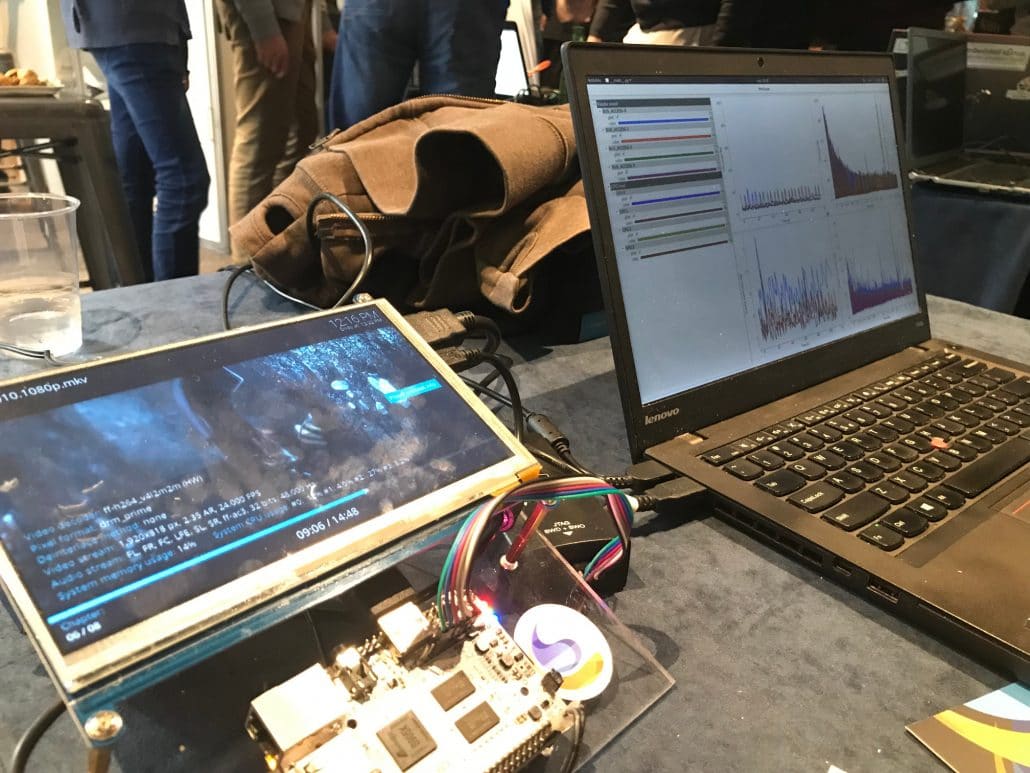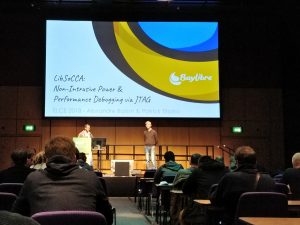In the past few months, BayLibre engineers Maxime Jourdan, Alexandre Bailon and Neil Armstrong showcased two demos to illustrate some of their recent work: fully hardware-accelerated video decoding which was linked to non-intrusive System Load monitoring via JTAG.
While these two demos seem unrelated, the non-intrusive System Load monitoring via JTAG developed by Alexandre Bailon was a good way to prove that the Amlogic Video Decoder driver from Maxime Jourdan and the Amlogic Video Processing Unit graphics output work well together, and that it’s possible to monitor system load without causing video frames to be dropped.
First of all, Maxime Jourdan did a talk at Embedded Recipes 2018 in Paris about his work on developing and upstreaming the Amlogic Video Decoder driver for the Amlogic S905, S905X, S9095D and S9012 SoCs.
You can access the talk here :
And slides at: https://www.slideshare.net/ennael/embedded-recipes-2018-upstream-multimedia-on-amlogic-so-cs-from-fiction-to-reality-maxime-jourdan
Then, Alexandre Bailon and Patrick Titiano spoke about their “libSoCCA” project which gets the real-time statistics of a running system via the well-known JTAG interface without interfering with the system’s execution or requiring any modifications to the code.
The ultimate demonstration was to show, in real-time, the CPU Load and CPU Bus accesses of a Libre Computer AML-S905X-CC system (running the LibreELEC Kodi distribution) with a steady 10% load decoding 50mbps 4K H.264 and 4K H.265 10-bit video samples from the JellyFish Video Bitrate test files http://jell.yfish.us/. And all without changing a single byte of the Linux filesystem or Kodi binaries.
Embedded Linux Europe #elc2018 showcase started featuring @librecomputer #lepotato and #lafrite running @KodiTV on @LibreELEC with @BayLibre ! pic.twitter.com/Iby4Jo4Ez5
— Neil Armstrong (@Superna9999) 23 octobre 2018
The most interesting fact of this demo is that Kodi doesn’t have any platform-specific code to handle Accelerated Hardware Video decoding, nor does FFmpeg which speaks to the decoder driver.
All of this is made possible thanks to the Linux DRM (Direct Rendering Manager) KMS (Kernel Mode Setting) GBM (Graphics Buffer Management) display support handled in Kodi, and the V4L2 (Video For Linux 2) Memory2Memory Hardware Decoder support from FFmpeg.
With these two graphics subsystems combined, decoded frames from the V4L2 interface can be passed to the DRM Video driver and scaled, blended and displayed. And thanks to the Linux DMA-BUF framework, none of the frames need to be copied.



